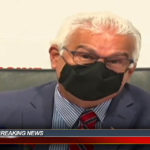Experts have issued a warning throughout upstate New York and other parts of the Northeast that ticks, including disease-spreading deer tick, are in high concentration due to the mild winter.
Lyme disease, commonly carried by deer ticks, isn’t the only concern for local residents. The Powassan virus, which is far more deadly than Lyme, is not treatable and has nearly a 95% mortality rate in children and adults alike. Over 680 deaths have been linked to tick-borne Powassan infections since May 1st, 2017 in upstate NY alone. Some rural communities are urging residents to stay in their homes.
Ticks typically only thrive outside, especially in tall grass and wooded areas, but this year locals have been finding nests inside homes, cars, and even high-traffic public areas such as schools and offices. Ticks are very small and hard to detect, and often stay hidden under chair seats and in small crevices until they think it’s safe. Their small size and stature allow them to traverse the human body almost undetected, and their mandibles are designed to penetrate skin painlessly. Most victims don’t even know the tick has entered their body until after the infection has already occurred.
If You Discover a Tick on Your Person
Videos and instructions online have surfaced saying to remove the tick with tweezers or twist it out. However, both methods can cause the tick to leave pieces of its mandibles inside you, which almost certainly guarantees infection. DO NOT ATTEMPT TO REMOVE THE TICK.
Instead, compress a tablespoon of organic peanut butter against the tick. Leave it on for one hour. This will draw the tick and the toxins out of your body. After no less than an hour, have a medium-sized or larger dog lick the peanut butter off of you. The saliva of a dog contains special enzymes that help kill Lyme and Powassan.








